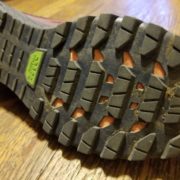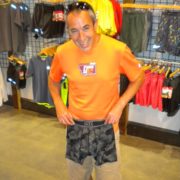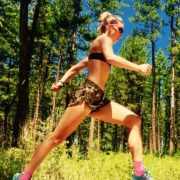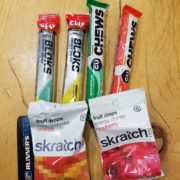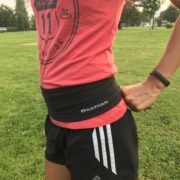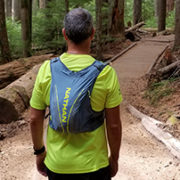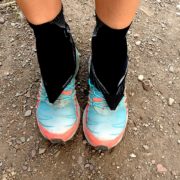Jesse Carnes has spent a lot of miles on the trails, both on foot and bike. He is currently training for his first 100 mile footrace, IMTUF. You can read more about Jesse’s exploits here.
If you know me very well, you know that one of my favorite races every year is The Rut Mountain Runs at Big Sky Resort. And if you have ever participated in The Rut, you probably have an idea why I like it so much. The descents are steep, the climbs are steeper, and the course is littered with rocks, rocks, and more rocks. I have seen more than one pair of shoes left in tatters after a trip up and down Headwaters Ridge and Lone Peak.
As a result, one of my main questions I ask myself when trying out a new pair of shoes is: How would this do on The Rut course? After some testing on varied terrain, I can say with confidence that the Asics Gecko XT passes the test and more.
To start, let’s discuss the main feature that defines the Gecko. As you might have guessed from the name, the sole is inordinately grippy.

The aggressive lugs in the middle of the sole work to reduce any slippage that you might encounter when the climbing gets steep, and the compound they use seems to pretty much stick to anything. Probably the most impressive performance is on wet rock. Where many other shoes would slip, this one stays surprisingly grounded. This is useful for pushing off when climbing and for cornering on rocky descents.
Some trail shoes do a very good job of seamlessly moving between trail and road, and can fairly comfortably be used for both. This is not one of them. It makes a horrendous racket on the road and doesn’t feel remotely smooth. Luckily, that’s okay because it’s not what the shoe is made for, but be forewarned in case you find yourself running some road miles to get to the trail. Once there, though, it is immediately at home on technical terrain.

The Gecko is pretty average among trail shoes as far as weight is concerned (the advertised weight for the men’s shoe is 10.2 ounces). For those looking for a particularly light weight shoe, that does seem to be a bit on the heavy side, but if the extra grip means less slippage and resulting lost potential when climbing, the weight penalty may be worth it, particularly when you take into account that it provides substantial stability and security when descending.
I will also say that this shoe has an extremely effective rock plate. I got a chance to do some hard descending on sufficiently rocky desert trails, and either I made zero mistakes (not likely) or the shoes have a superb ability to soak up any blows from sharp rocks.
The durability, while yet to be determined definitively, is looking promising. In my experience, good grip often comes from soft lugs, and soft lugs can get ripped up quite easily. After the aforementioned rocky trails, I took the photo of the sole of the shoe above. The lugs appear to be holding up quite nicely. Time will tell, and if you are curious about this shoe, feel free to ask me about it in a month or two, because chances are I will find more opportunities to beat it up in that time.
The final takeaway: if you like technical, rocky trails, this shoe is definitely worth a try. If you run a lot of roads and hit the occasional flowy singletrack, you might look elsewhere.

